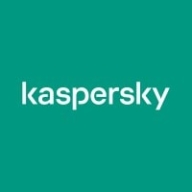

Kaspersky Endpoint Security for Business and Cisco Secure Endpoint compete in the endpoint protection category. Cisco Secure Endpoint has the upper hand due to its advanced features despite a higher price.
Features: Kaspersky offers comprehensive antivirus protection, centralized management, and straightforward deployment. Cisco Secure Endpoint focuses on advanced threat detection, integration into broader security ecosystems, and superior response capabilities.
Room for Improvement: Kaspersky users suggest better cloud protection, system performance, and optimization. Cisco Secure Endpoint requires a more intuitive user experience, less complexity in configuration, and faster deployment processes.
Ease of Deployment and Customer Service: Kaspersky is known for simple deployment and responsive customer service. Cisco Secure Endpoint has more complex deployment but benefits from high-quality customer service.
Pricing and ROI: Kaspersky is cost-effective with robust features at a lower price point. Cisco Secure Endpoint, while more expensive, offers significant ROI through advanced threat detection and integration capabilities, justifying its higher cost.
Cisco has good technical support, especially considering these are newer solutions compared to traditional routing and switching products.
I would rate technical support from Kaspersky a nine out of ten.
The technical support from Kaspersky was very responsive.
Cisco Secure Endpoint is definitely scalable.
Any endpoint added to Active Directory can be detected by Kaspersky Security Center, which can then push the agent onto it.
Both scalability and stability of Kaspersky Endpoint Security for Business are solid.
We have not encountered any problems.
There have been performance issues during scanning, causing the PC to respond slowly.
The forensic capabilities need enhancement, especially for deep forensic data collection.
Kaspersky needs to improve its security techniques as it has not been in Gartner records for the last two years.
I previously mentioned that Kaspersky Endpoint Security for Business doesn't have built-in DLP, which was a concern.
Cisco is aggressive in pricing, making it competitive and sometimes even cheaper than other good products like CrowdStrike, Microsoft Defender, or SentinelOne.
The pricing and licensing cost of Kaspersky Endpoint Security is cheaper compared to Trend Micro.
Cisco Secure Endpoint is very good in machine learning, which allows it to secure offline contents even if not connected to the internet.
The best features in Kaspersky Endpoint Security for Business are the file threat protection, web threat protection, mail threat protection, network threat protection, firewall, behavior detection, and exploit prevention.
It offers scalability as any endpoint added to Active Directory can be easily integrated by Kaspersky Security Center.
| Product | Market Share (%) |
|---|---|
| Kaspersky Endpoint Security for Business | 2.9% |
| Cisco Secure Endpoint | 1.5% |
| Other | 95.6% |


| Company Size | Count |
|---|---|
| Small Business | 21 |
| Midsize Enterprise | 14 |
| Large Enterprise | 21 |
| Company Size | Count |
|---|---|
| Small Business | 61 |
| Midsize Enterprise | 27 |
| Large Enterprise | 34 |
Cisco Secure Endpoint is a comprehensive endpoint security solution that natively includes open and extensible extended detection and response (XDR) and advanced endpoint detection and response (EDR) capabilities. Secure Endpoint offers relentless breach protection that enables you to be confident, be bold, and be fearless with one of the industry’s most trusted endpoint security solutions. It protects your hybrid workforce, helps you stay resilient, and secures what’s next with simple, comprehensive endpoint security powered by unique insights from 300,000 security customers and deep visibility from the networking leader.
Cisco Secure Endpoint was formerly known as Cisco AMP for Endpoints.
Reviews from Real Users
Cisco Secure Endpoint stands out among its competitors for a number of reasons. Two major ones are its ability to enable developers to easily secure their endpoints with one single operation using its management console and its advanced alerting techniques.
Tim C., an IT manager at Van Der Meer Consulting, writes, "The solution makes it possible to see a threat once and block it everywhere across all endpoints and the entire security platform. It has the ability to block right down to the file and application level across all devices based on policies, such as, blacklisting and whitelisting of software and applications. This is good. Its strength is the ability to identify threats very quickly, then lock them and the network down and block the threats across the organization and all devices, which is what you want. You don't want to be spending time working out how to block something. You want to block something very quickly, letting that flow through to all the devices and avoiding the same scenario on different operating systems."
Wouter H., a technical team lead network & security at Missing Piece BV, notes, "Any alert that we get is an actionable alert. Immediately, there is information that we can just click through, see the point in time, what happened, what caused it, and what automatic actions were taken. We can then choose to take any manual actions, if we want, or start our investigation. We're no longer looking at digging into information or wading through hundreds of incidents. There's a list which says where the status is assigned, e.g., under investigation or investigation finished. That is all in the console. It has taken away a lot of the administration, which we would normally be doing, and integrated it into the console for us."
Kaspersky Endpoint Security for Business is a cybersecurity solution that is designed to protect small and large business networks and devices from all types of cyber security threats by implementing machine learning algorithms for real-time threat detection and response. The solution offers antivirus protection, firewall, network attack protection, web control, device control, data encryption, reporting tools, and more. Kaspersky integrates with a wide variety of external systems and platforms and is easy to customize to meet your organization’s specific security needs.
Benefits of using Kaspersky Endpoint Security for Business
Some of the key benefits of using Kaspersky Endpoint Security for Business include:
Kaspersky Endpoint Security for Business features
Kaspersky Endpoint Security for Business provides its users with a wide range of features to protect their corporate networks and devices against multiple types of threats, including:
Reviews from Real Users
Kaspersky Endpoint Security for Business stands out among its competitors for a number of reasons. Several major ones are its high performance, flexibility, and powerful virtualization capabilities.
Natnael A., a consultant at IWM Network Solutions, writes, “The app virtualizing is a great feature. The system developers use it to deliver apps to targeted staff. It basically reduces the server infrastructure resource. The solution provides good functionality.”
Rob M., a systems administrator at Saint Tammany Parish Hospital, says, “The solution has provided flexibility by allowing an end user to remote in, log in, and get their VM. VDI session and have all the icons and applications they need to use and retain the same booking view regardless of location.”
We monitor all Endpoint Protection Platform (EPP) reviews to prevent fraudulent reviews and keep review quality high. We do not post reviews by company employees or direct competitors. We validate each review for authenticity via cross-reference with LinkedIn, and personal follow-up with the reviewer when necessary.